Fingerprints and artifacts both play important roles in Jenkins workflows, making it easier to track, manage, and improve the software development and continuous integration (CI) process. Let’s break down how each of these elements enhances Jenkins workflows:
Fingerprints:
Fingerprints are unique identifiers that Jenkins assigns to various components, such as build outputs, source code, or any other items that might be part of a build process. The fingerprint typically comes from a hash of the content of a file or artifact. It ensures that every part of a build can be traced back to its origin and guarantees consistency.
How Fingerprints Enhance Jenkins Workflows:
Traceability: Fingerprints ensure that you can always trace the exact version of the code and dependencies that were used in any given build. This is critical when debugging, performing audits, or identifying issues in a particular version of software.
Consistency: With fingerprints, you can ensure that the build artifacts (e.g., JARs, WARs, etc.) are consistently the same across different Jenkins jobs and environments. If an artifact’s fingerprint doesn’t match, you know it’s not the same artifact.
Improved Dependency Management: By tracking fingerprints, you can correlate between different stages of a build, and dependencies can be tracked more precisely. This can prevent issues with mismatched or outdated dependencies.
Efficient Cache Handling: Jenkins can optimize workflows by caching specific artifacts based on their fingerprints. If the fingerprint hasn’t changed, Jenkins can skip parts of the build process (like recompiling), improving build efficiency.
Artifacts:
Artifacts are files generated as part of the build process, such as compiled binaries, test reports, configuration files, logs, and other output files. These are often stored and archived for future reference.
How Artifacts Enhance Jenkins Workflows:
Storage for Future Use: Artifacts, once built, can be stored and reused in later stages or even in other Jenkins jobs. For instance, you might store a built .jar file as an artifact and use it in deployment stages or testing phases in a different job.
Archival for Rollback: Storing artifacts as part of your build helps in versioning. If you need to rollback to a previous version, you can retrieve the exact artifact from the build archive without rebuilding it.
Continuous Delivery/Deployment: Artifacts are essential in a CI/CD pipeline. They represent the build outputs that are deployed or tested in different environments, allowing you to automate the delivery process effectively.
Separation of Concerns: Artifacts allow you to separate the build from the deployment or testing process. This separation means that you can decouple your CI pipeline and focus on using the same artifacts for various tasks (such as deployment or performance testing), without having to rebuild them.
Combining Fingerprints and Artifacts:
Together, fingerprints and artifacts streamline Jenkins workflows by ensuring that every artifact can be traced and validated. For example: You can archive a build artifact and, using its fingerprint, trace the exact code that produced it, as well as the environment it was built in. You can ensure that only the correct version of an artifact (identified by its fingerprint) is used in subsequent stages like deployment or testing. This combination creates a reliable and efficient build system where every part of the process is traceable, reducing the chances of errors and making debugging easier.
Requirements.
Create a Jenkins installed in ec2 server.
TASK 1: Create an Artifact for the output of Job in Jenkins—Method 1.
STEP 1: Go to AWS Dashboard Click on create new item.
- Enter the item name.
- Select freestyle project.
- Click on ok button.
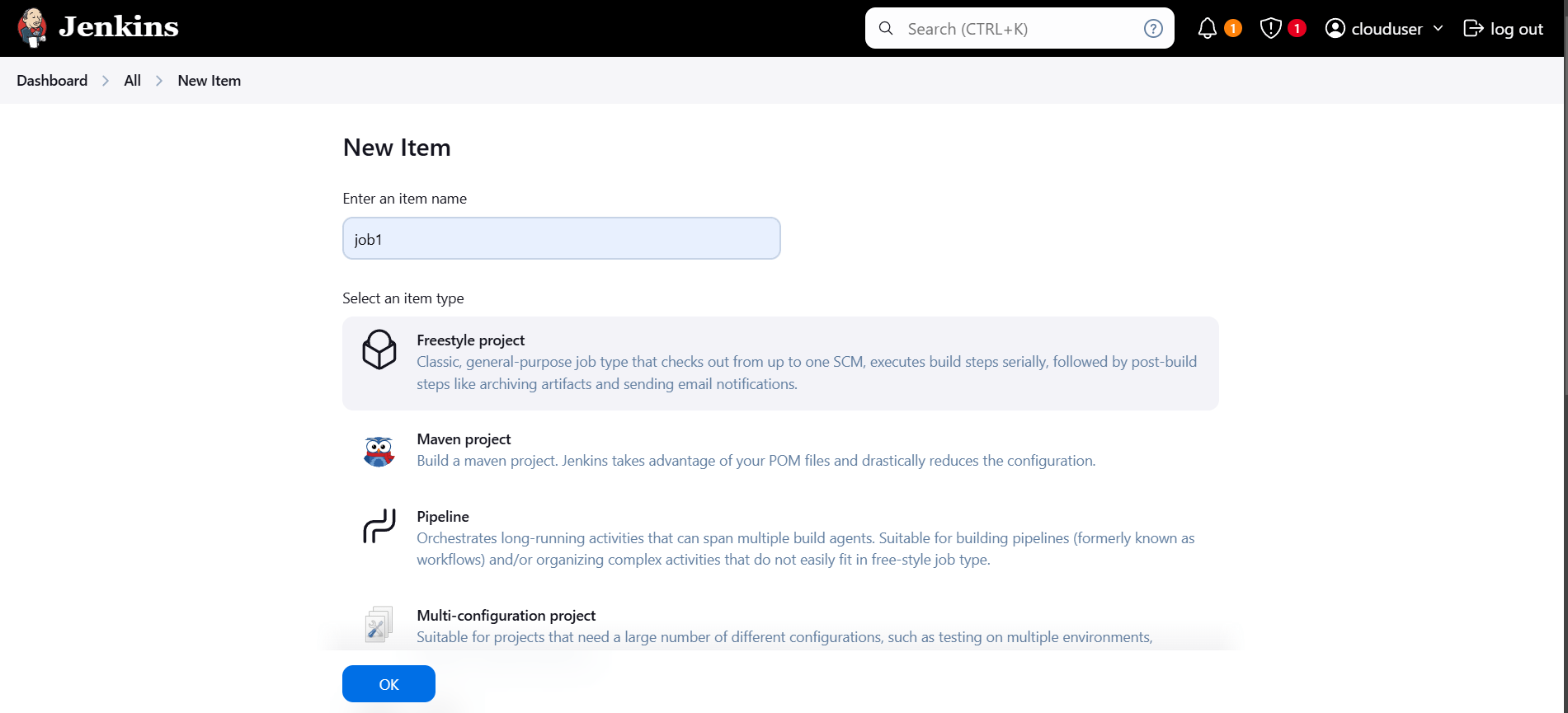
STEP 2: Configure the job.
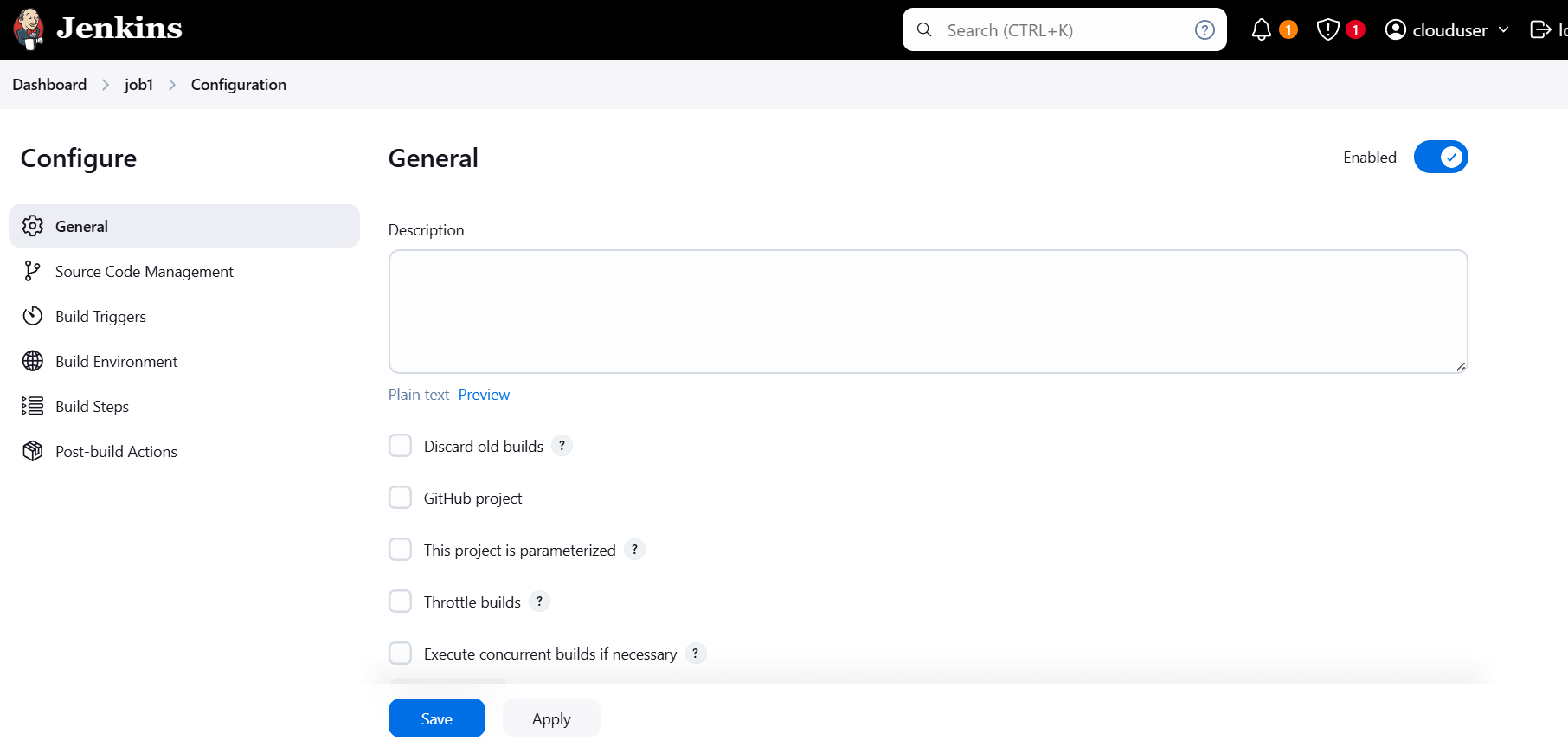
STEP 3: Scroll down Click on Add build step under build steps.
- Select execute shell.
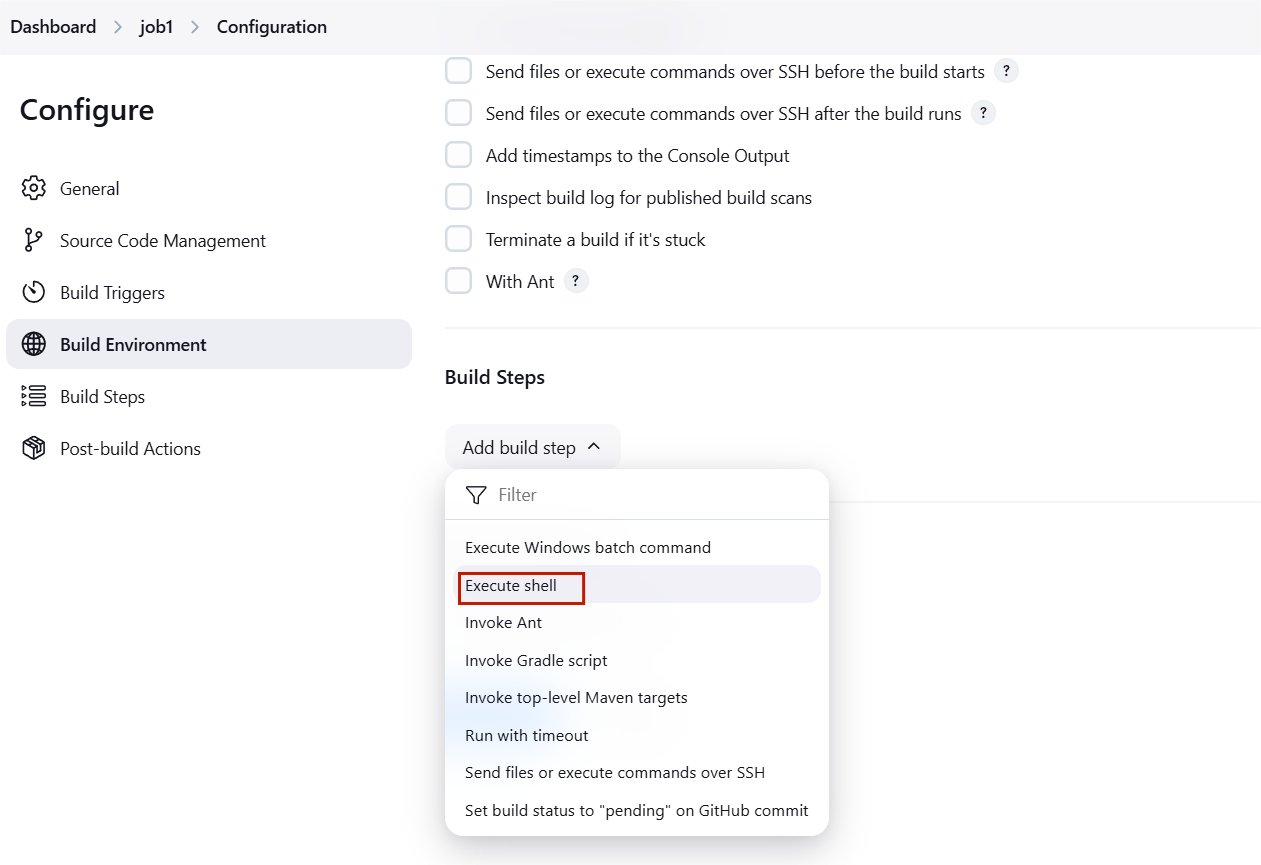
STEP 4: Enter the following command in execute shell.
touch testarchive
tar -czvf archive01.tar.gz testarchive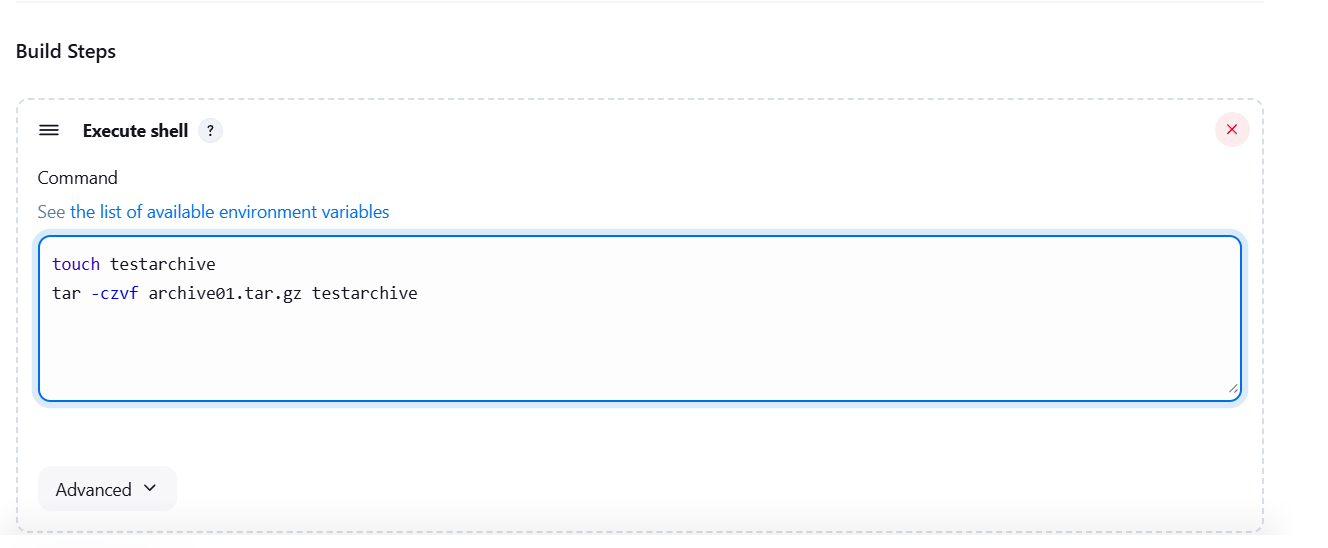
STEP 5: Click on Advance button and select archive the artifacts.
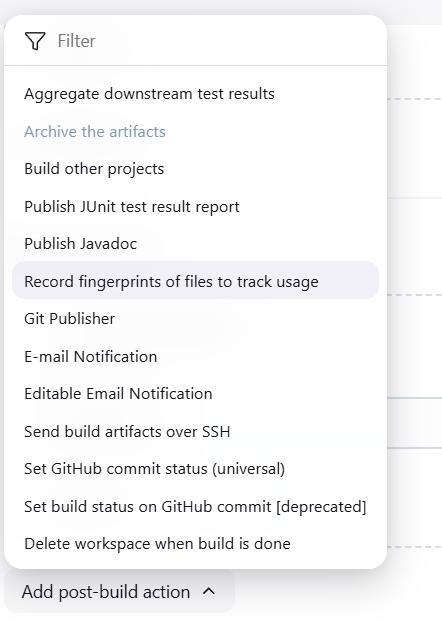
STEP 6: Enter archive the artifacts.
archive01.tar.gz 
STEP 7: Click on advanced and Select fingureprint all archived artifacts.
- Apply and save.
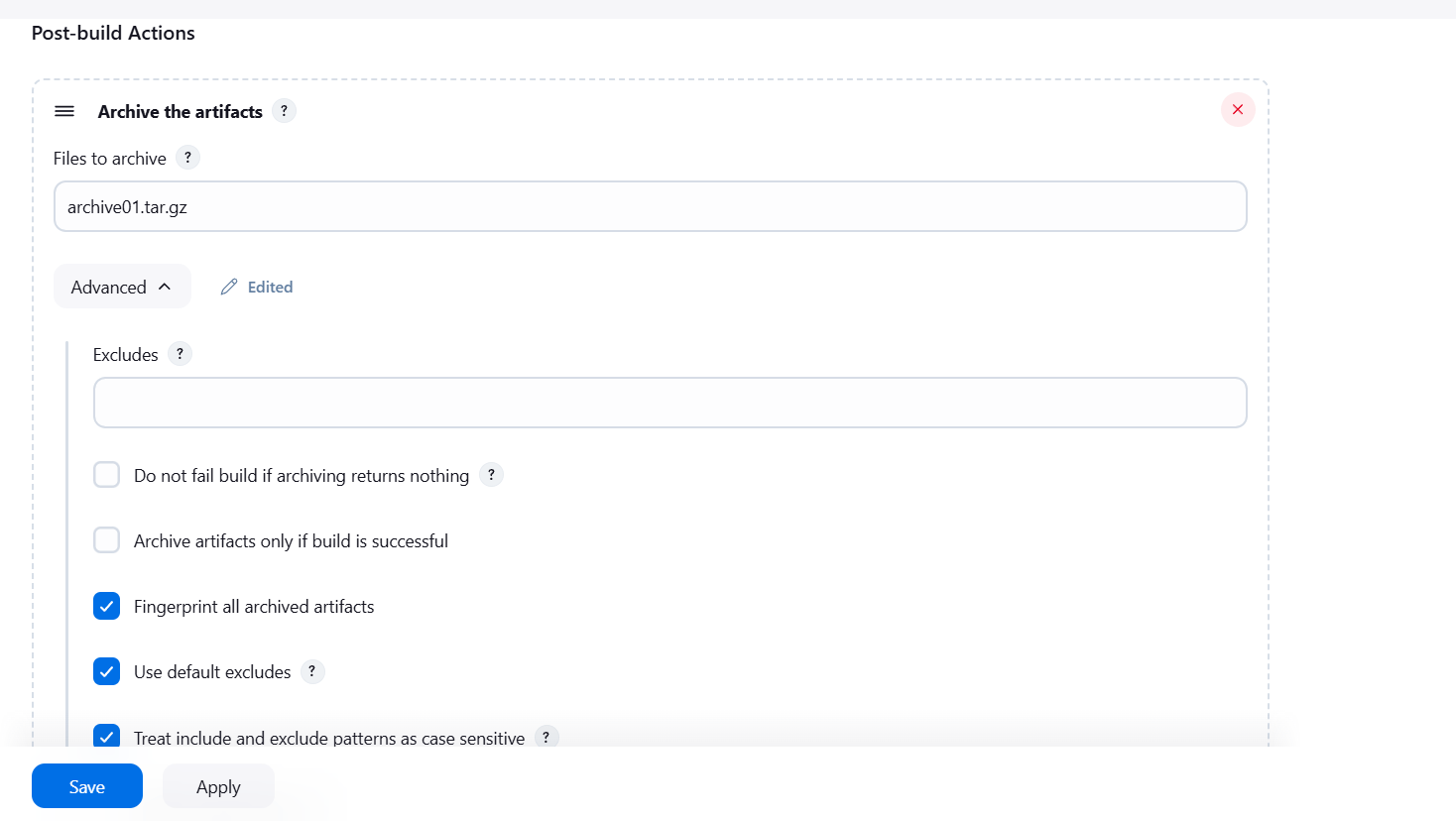
STEP 8: Click on build job.
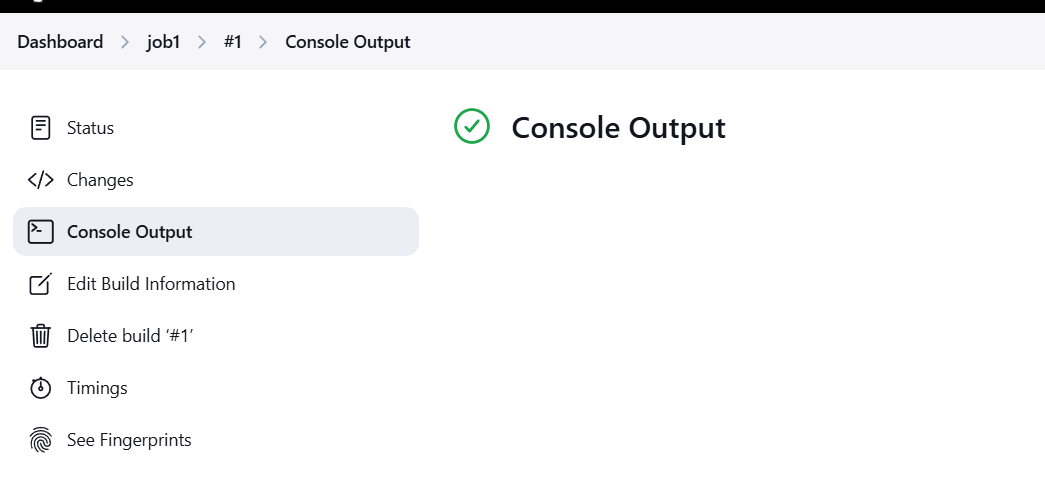
STEP 9: Click on see fingureprints.

STEP 10: Click on fingureprints name.
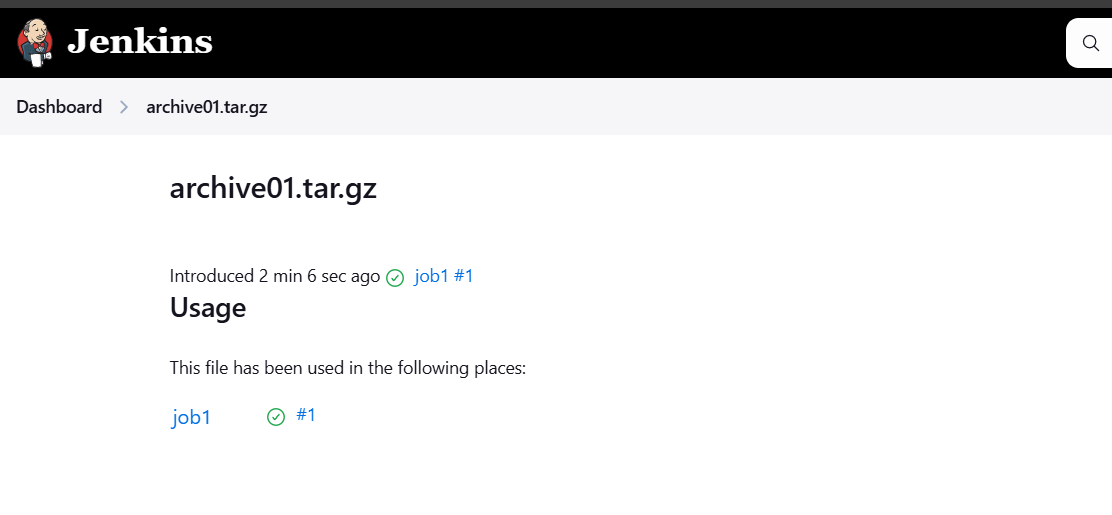
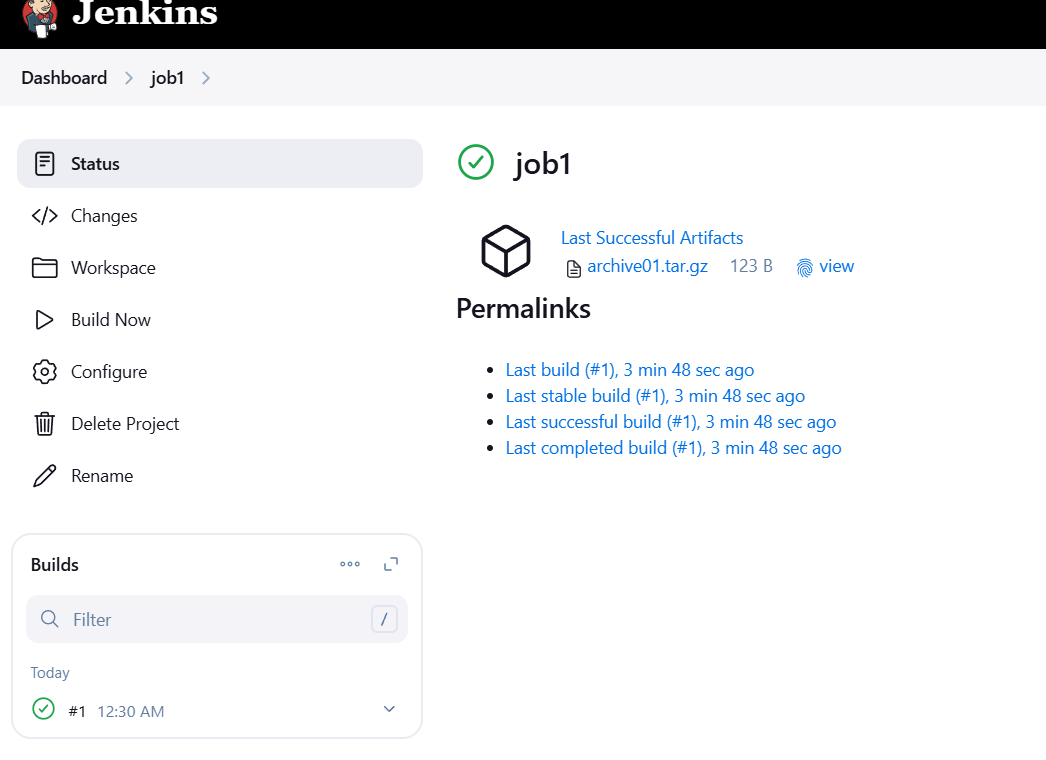
TASK 2: Create an Artifact for the output of Job in Jenkins—Method2.
STEP 1: Go to the job configure and delete the archive artifacts.
- Add select the record fingureprints of files to track usage.
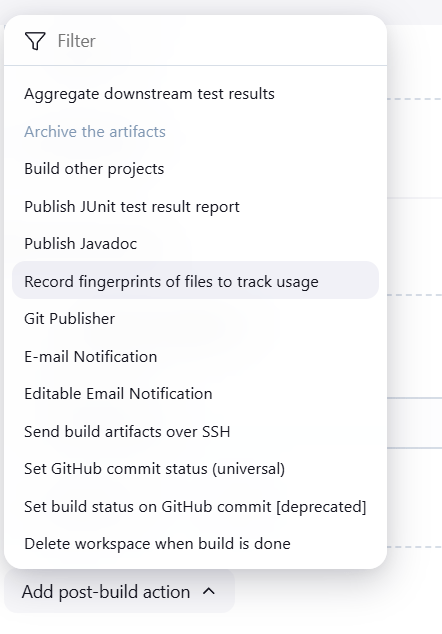
STEP 2: Select postbuild actions.
- Enter files to fingureprint.
- Apply and save.
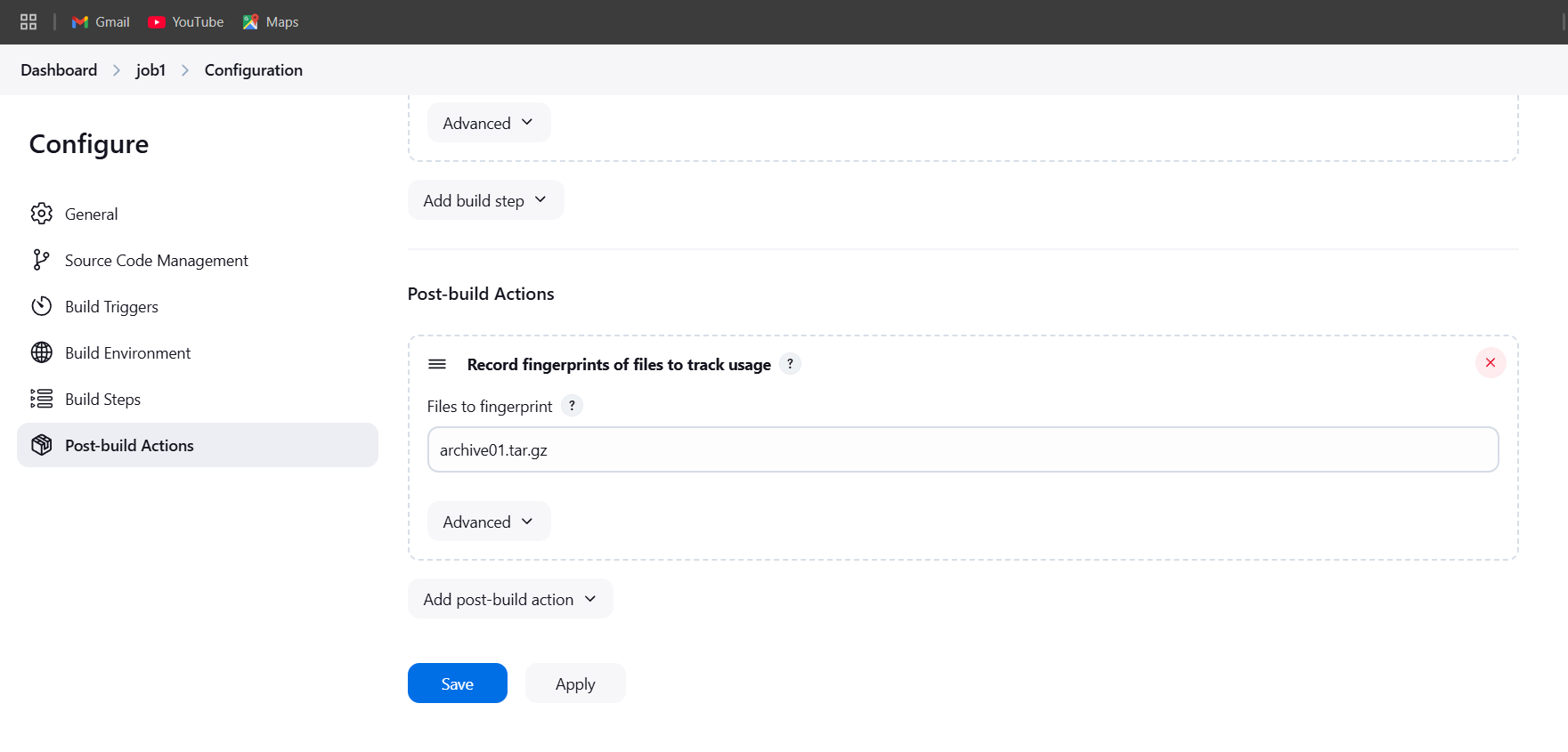
STEP 3: Now build now and click on see fingureprints.
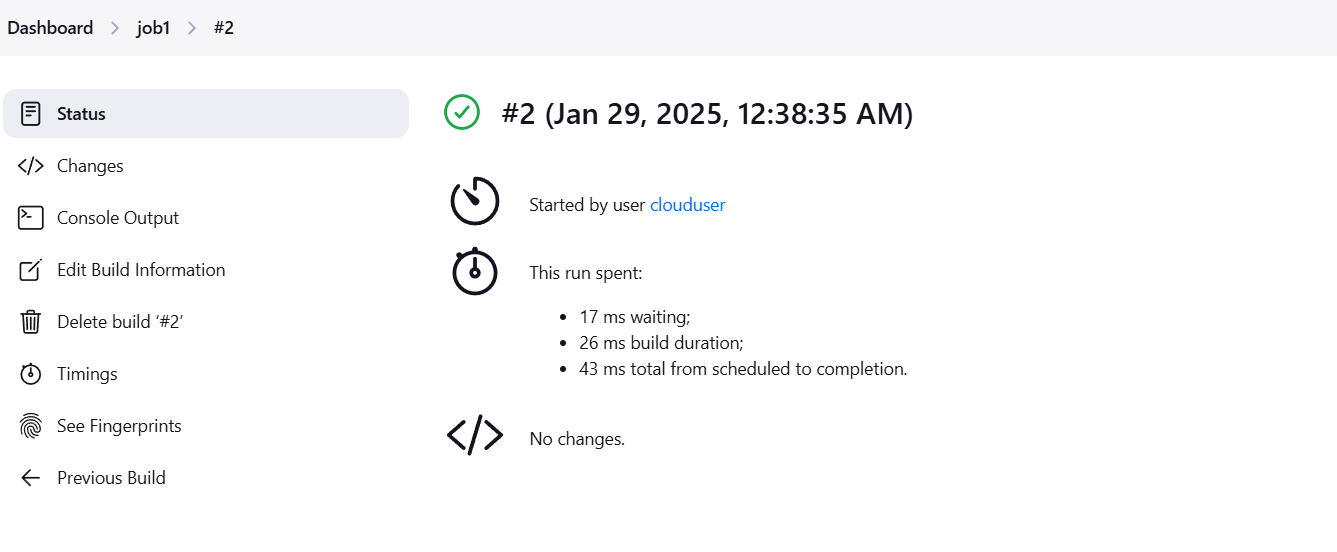
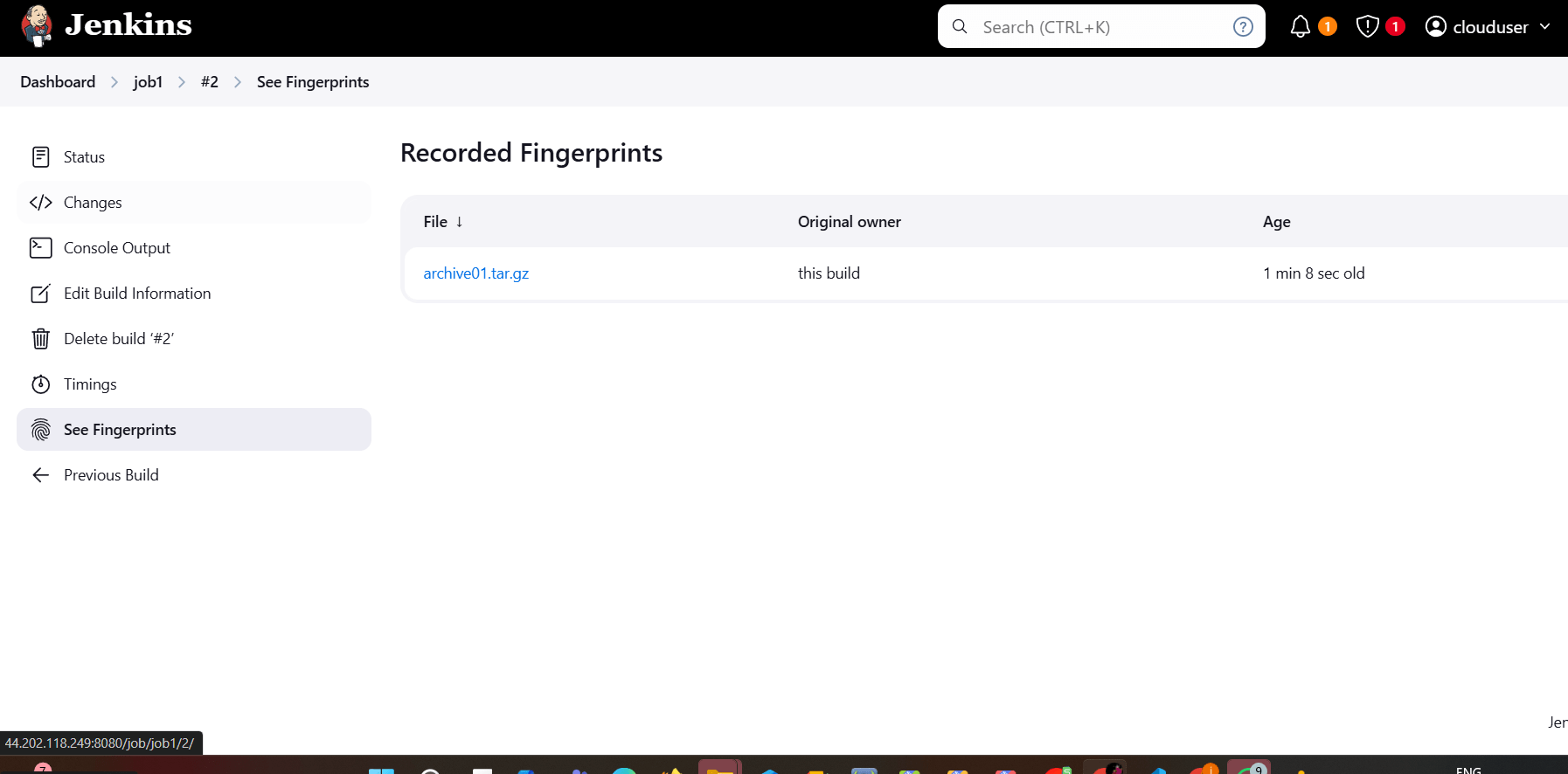
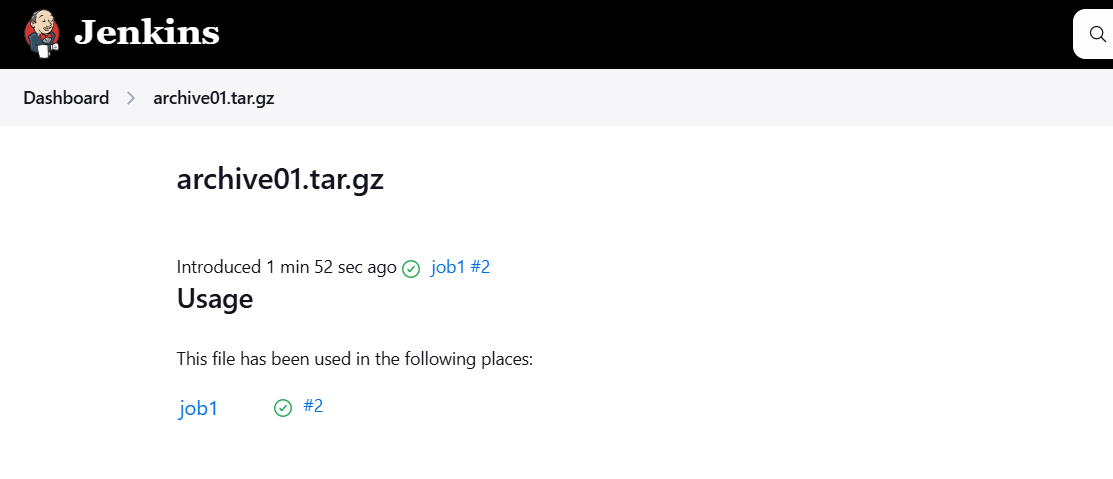
Conclusion.
In conclusion, fingerprints and artifacts are key elements that significantly enhance Jenkins workflows by ensuring traceability, consistency, and efficiency. Fingerprints provide a unique identifier for every component, enabling precise tracking and validation of builds, dependencies, and outputs. Artifacts, on the other hand, are the tangible build outputs that can be stored, reused, and deployed across different stages of the CI/CD pipeline. By combining both, Jenkins users can establish a robust, reliable, and streamlined process where every artifact is verifiable and can be traced back to its source. This not only improves debugging, auditing, and consistency but also optimizes build performance and supports continuous delivery and deployment. Ultimately, leveraging fingerprints and artifacts helps teams maintain high-quality software while enhancing collaboration and minimizing errors across the development lifecycle.

Add a Comment